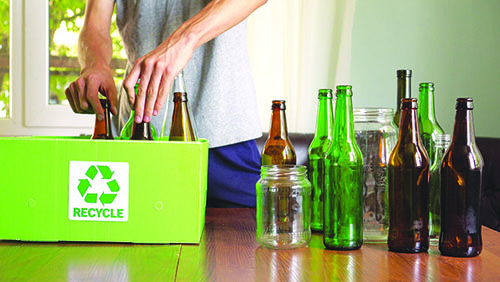Based on extensive input from the public and a broad range of stakeholders, including public health groups, auto manufacturers, refiners and states, the U.S. Environmental Protection Agency (EPA) has finalized emission standards for cars
and gasoline in an attempt to significantly reduce harmful pollution while also enabling efficiency improvements in the cars and trucks we drive. These cleaner fuel and car standards are an important component of the administration’s national program for clean cars and trucks, which also include historic fuel efficiency standards that are saving new vehicle owners at the gas pump. Once fully in place, the EPA predicts that the new standards will help avoid up to 2,000 premature deaths per year and 50,000 cases of respiratory ailments in children.
The final standards will quickly and effectively cut harmful soot, smog and toxic emissions from cars and trucks. The Obama Administration’s actions to improve fuel economy and reduce greenhouse gases from these same vehicles will also result in average fuel savings of more than $8,000 by 2025 over a vehicle’s lifetime. The fuel economy and greenhouse gas standards covering model year vehicles from 2012-2025 are projected to save American families more than $1.7 trillion in fuel costs.
The standards slash emissions of a range of harmful pollutants that can cause premature death and respiratory illnesses, reducing standards for smog-forming volatile organic compounds and nitrogen oxides by 80 percent, establishing a 70 percent tighter particulate matter standard and virtually eliminating fuel vapor emissions. These standards will also reduce vehicle emissions of toxic air pollutants, such as benzene by up to 30 percent.
The final fuel standards will reduce gasoline sulfur levels by more than 60 percent – down from 30 to 10 parts per million in 2017. Reducing sulfur in gasoline enables vehicle emission control technologies to perform more efficiently. New low-sulfur gas will provide significant and immediate health benefits because every gas-powered vehicle on the road built prior to these standards will run cleaner – cutting smog-forming NOx emissions by 260,000 tons in 2018.
The Tier 3 standards cut tailpipe pollution where people live and breathe – reducing harmful emissions along the streets and roadways that run through neighborhoods and near schools. By 2018, EPA estimates the cleaner fuels and cars program will annually prevent between 225 and 610 premature deaths, significantly reduce ambient concentrations of ozone and reduce nitrogen oxide emissions by about 260,000 tons. That is about 10 percent of emissions from on-highway vehicles, with those reductions reaching 25 percent (330,000 tons) by 2030.
By 2030, EPA estimates that up to 2,000 premature deaths, 50,000 cases of respiratory ailments in children, 2,200 hospital admissions and asthma-related emergency room visits, and 1.4 million lost school days, work days and days when activities would be restricted due to air pollution. Total health-related benefits in 2030 will be between $6.7 and $19 billion annually. The program will also reduce exposure to pollution near roads. More than 50 million people live, work or go to school in close proximity to high-traffic roadways, and the average American spends more than one hour traveling along roads each day.
The final standards are expected to provide up to $13 in health benefits for every dollar spent to meet the standards, more than was estimated for the proposal. The sulfur standards are projected to cost less than $.01 per gallon of gasoline on average once the standards are fully in place. The vehicle standards will have an estimated average cost of about $72 per vehicle in 2025. The standards support efforts by states to reduce harmful levels of smog and soot and aids their ability to attain and maintain science-based national ambient air quality standards to protect public health, while also providing flexibilities for small businesses, including hardship provisions and additional lead time for compliance.
Published in the April 2014 Edition of American Recycler News







